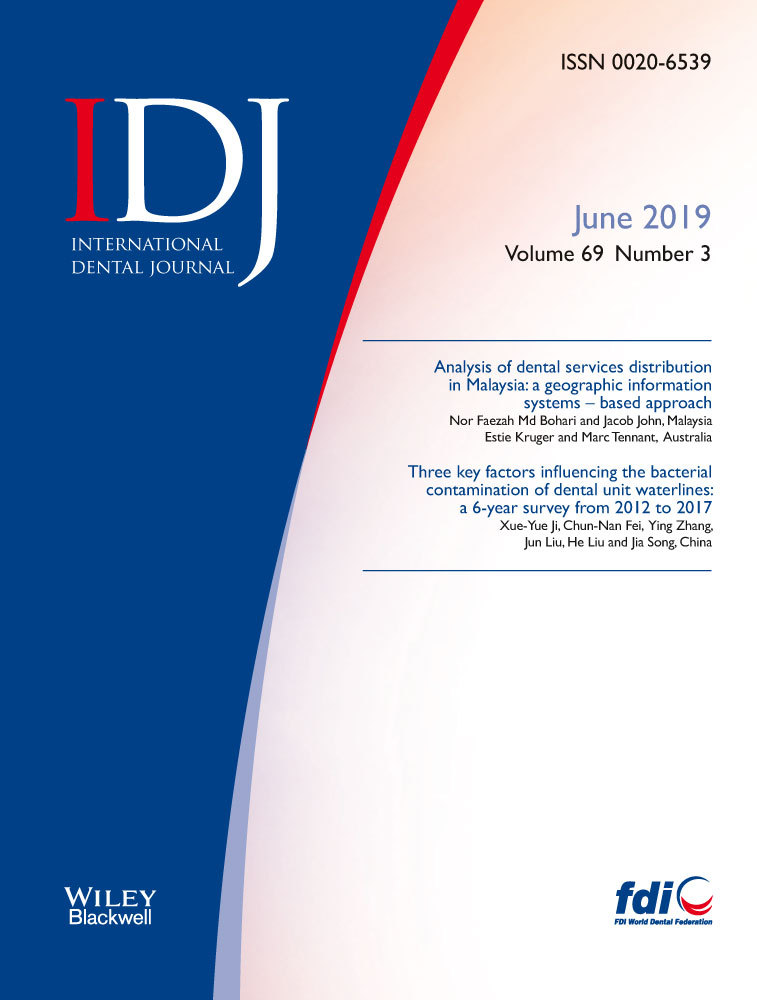Analysis of dental services distribution in Malaysia: a geographic information systems – based approach
Abstract
Objective
The aim of this study was to analyse, in detail, the distribution of primary dental clinics in relation to the Malaysian population and relative population wealth, to test the hypothesis that an uneven distribution of dental services exists in Malaysia.
Method
This 2016 study located every dental practice in Malaysia (private and public) and mapped these practices against population, using Geographic Information Systems (GIS) tools. Population clusters within 5, 10 and 20 km of a dental clinic were identified, and clinic-to-population ratios were ascertained. Population data were obtained from the Population and Housing Census of Malaysia 2010. Population relative wealth was obtained from the 2014 Report on Household Income and Basic Amenities Survey for Malaysia. The physical address for each dental practice in Malaysia was gathered from the Official Portal of Ministry of Health Malaysia. All data for analysis were extracted from the integrated database in Quantum GIS (QGIS) into Microsoft Excel.
Result
The population of Malaysia (24.9 million) was distributed across 127 districts, with 119 (94%) having at least one dental clinic. Sixty-four districts had fewer than 10 dental clinics, and 11.3% of Malaysians did not reside in the catchment of 20 km from any dental clinic. The total dental clinic-to-population ratio was 1:9,000: for public dental clinics it was 1:38,000 and for private clinics it was 1:13,000.
Conclusion
Dental services were distributed relative to high population density, were unevenly distributed across Malaysia and the majority of people with the highest inaccessibility to a dental service resided in Malaysian Borneo.




